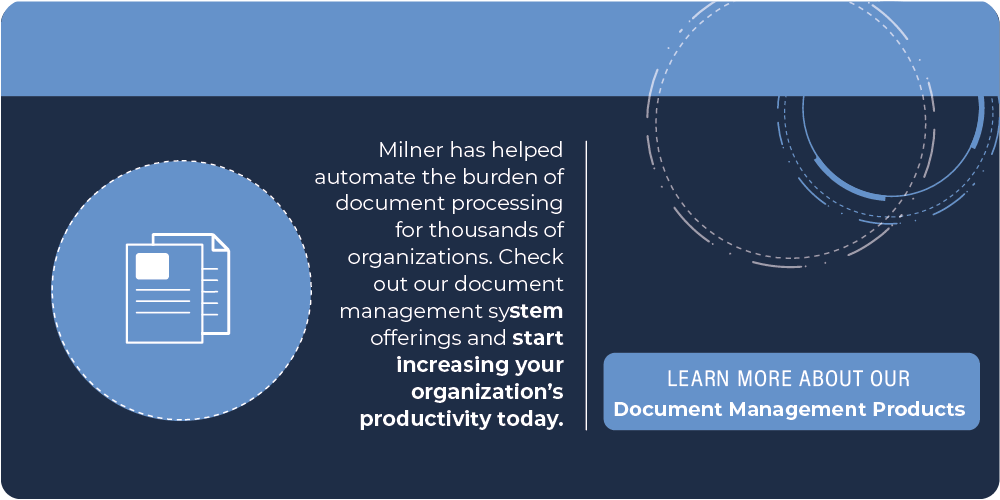
Feb 16, 2022
A paperless operation is essential for growing a business: in addition to helping organizations cut costs, going paperless helps businesses maximize efficiency and eliminate waste. The paperless revolution has been ongoing for decades, but many organizations are still heavily relying on paper PDFs, printed brochures, and physical contracts and forms.
Prioritizing and improving document management workflows begins with a high-level understanding the context of document inefficiencies and inefficient processes. Here, we lay out some of the reasons why relying on paper documents may be hindering your company’s efficiency, as well as provide suggestions on how to stop document mismanagement by digitizing your organization’s documents.
Possible information loss
If your company still relies mainly on physical documents, it's a good exercise to consider how your business would survive if all your papers were lost. You may think your physical documents are safe, but minor accidents and natural disasters happen every day. Even human error can be much more of a liability than you might think, as physical documents can be misplaced, spilled on, fade, or become smudged. You may not realize that your company's inability to protect these important documents hinders its productivity.
Wasted time and money
The traditional filing system requires physical access, and can take a considerable amount of time to find a misfiled document which may have been hiding in a stack of folders on your desk all along. Is getting to the information you need preventing you and your employees from doing bigger, better things with your time?
A lost document can put an end to even the most effective paper-based filing systems. By implementing a solution to capture and intelligently index your content and document activity, you can prevent lost documents and data losses in your business. This can be efficiently accomplished through the implementation of software that uses AI learning to locate and extract data to refine your digital processes. A document workflow tool can help you organize your offices, make your data more secure and improve a wide range of employee collaboration.
Inefficient document movement
Do you rely heavily on sending documents from one place to another for your business operations? Work schedules, work orders, reports, certificates and guides have all traditionally been printed out and physically distributed to workers which takes time, resources and money. Moreover, the task of distributing printed materials puts the onus on workers to remember where they have placed sensitive and important materials, increasing the risk of human error and interference.
By digitizing documents, these risks can be decreased since documents can now be transferred instantly, making work more efficient. With less paper-based processes, your employees can work on other tasks rather than waiting for someone to approve a form.
Even if you know you need to automate your business’ workflow and begin digitizing your physical documents, it can be difficult to know where to begin. The first step is to audit your organization's paper movement, identifying the problem that is currently pushing your operation costs up, and determining where the most bottlenecks are in your paper workflows. Determine which of your departments could benefit the most from digital business process improvement by updating their document workflows and work toward streamlining processes in these areas. A few of the most common areas for automating business processes and streamlining paperless processes are: employee onboarding, invoice approval, check payment processing, case management, patient chart management and contract expiration management.
Would you like to find out just how much paper is being stowed away in your filing cabinets? Our Paper Calculator was built for this very reason.
Perhaps one of the best places to transform your business' workflow and help with your business process improvement is by automating your financial systems and accounting processes. Invoice processing and approval can be tedious with most companies still relying on manual instead of digital processes to input their data and manage their payments. AP automation for your accounting processes can help your business lower processing costs, increase efficiency, take advantage of payment discounts and improve visibility. All while configuring the electronic workflow and digital processes to your own criteria and procedural standards and needs.
Going paperless also opens the door to many potential innovations for improving process efficiency in the future. HR professionals and departments can use it to facilitate more efficient training and onboarding. It can give you better insight into how operations are conducted, giving you better visibility into your business and allowing for better evidence-based decision-making for both employees and management. Going paperless even allows for business growth through innovative solutions like employee systems where workers can share ideas, collaborate on complex tasks, and receive feedback.
